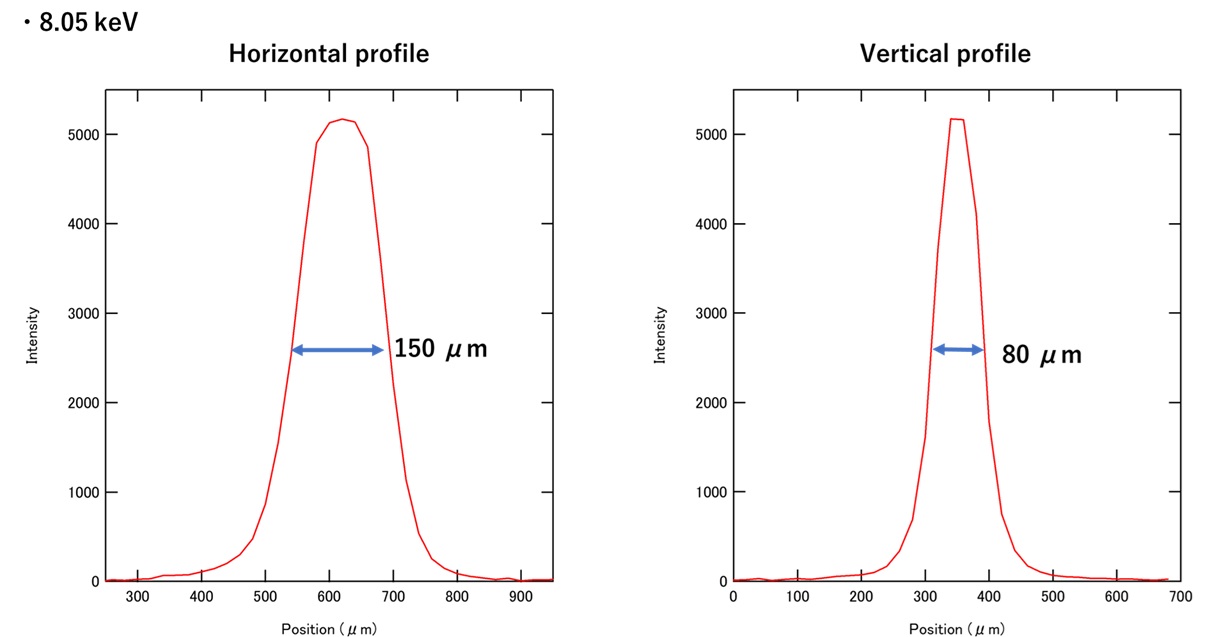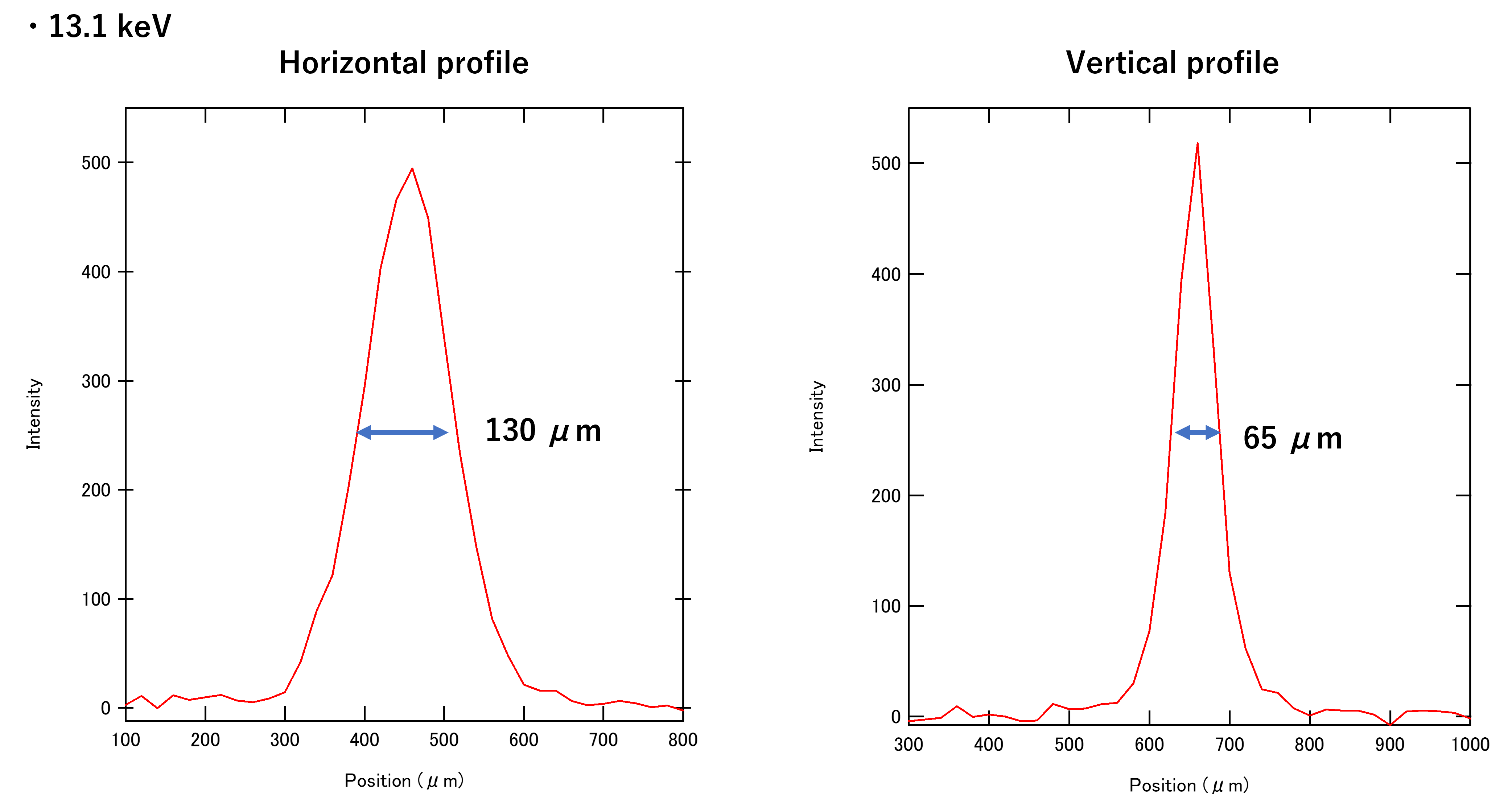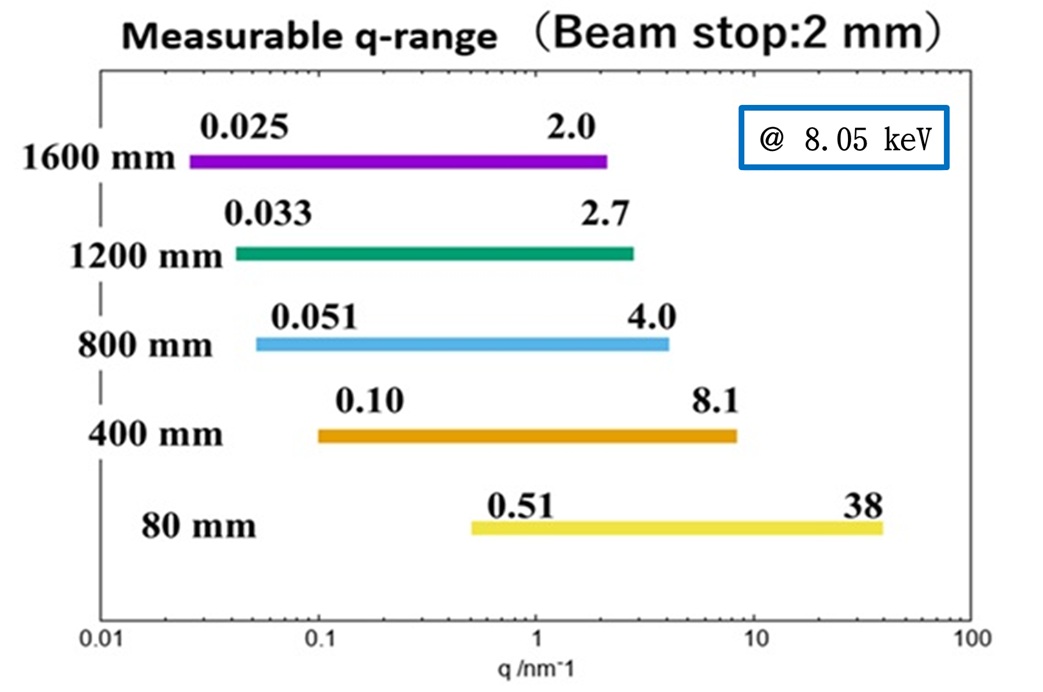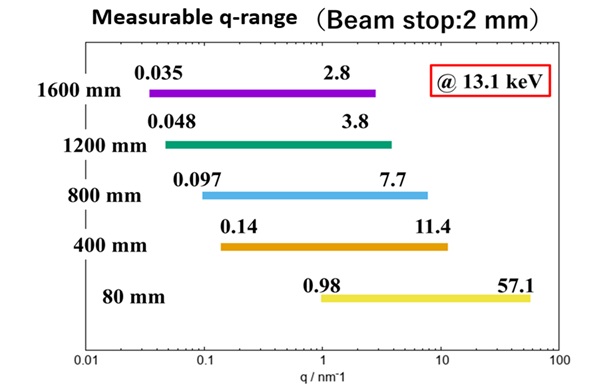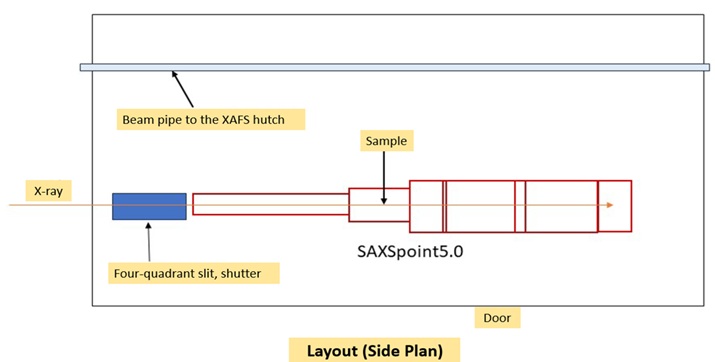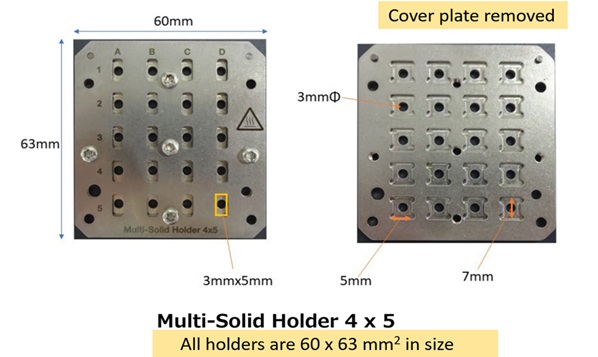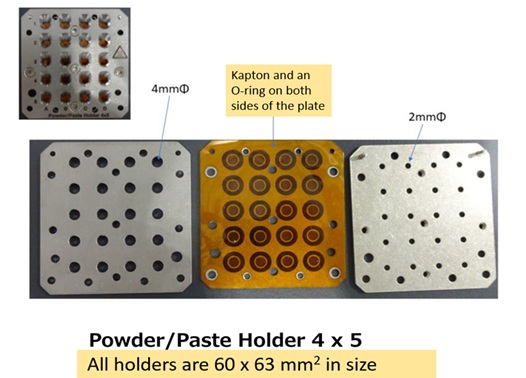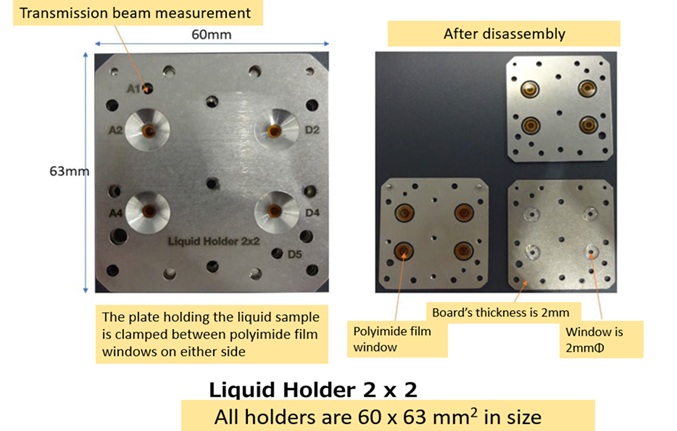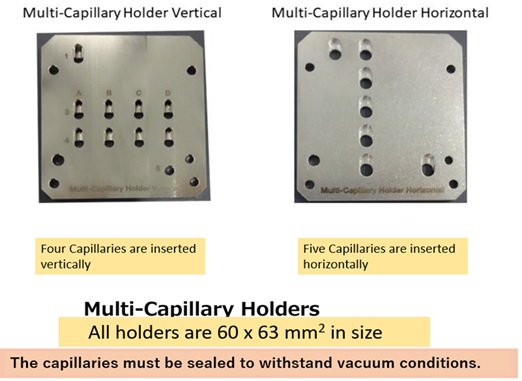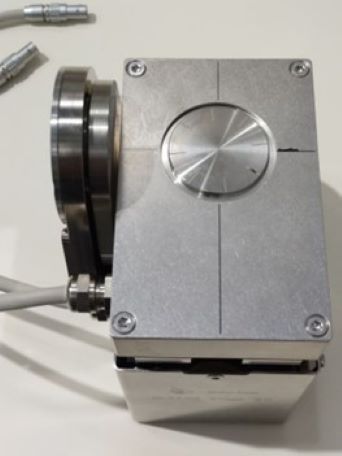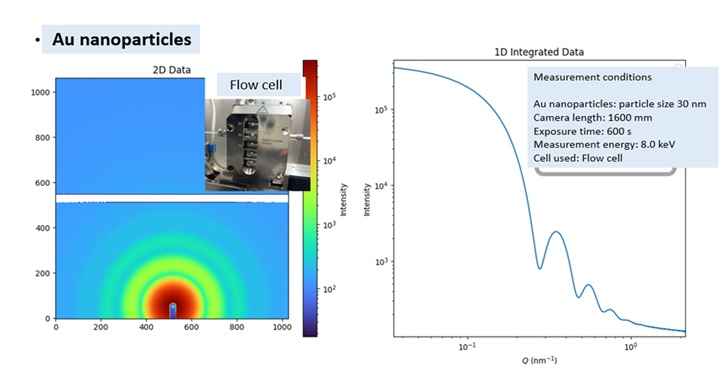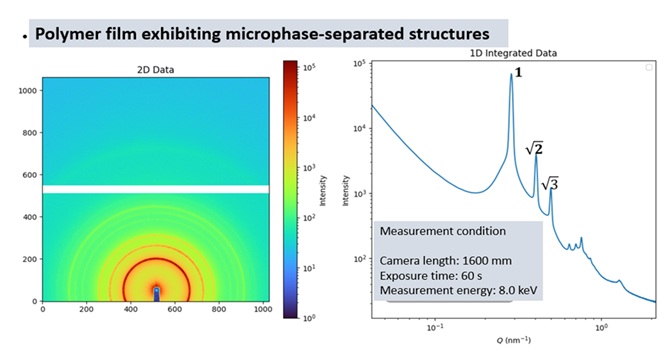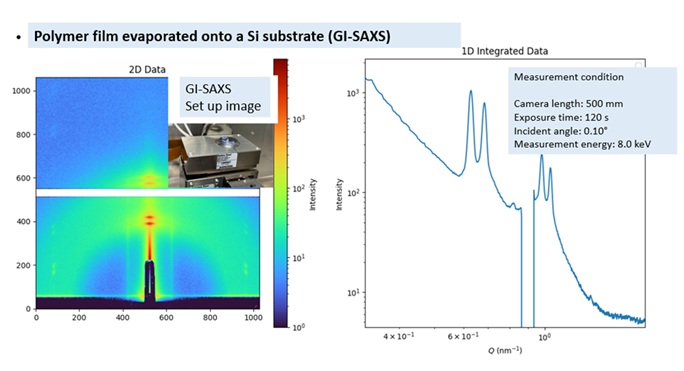BL08W SAXS INFORMATION
Experimental Techniques
- Small angle X-ray scattering
- Wide angle X-ray scattering and diffraction
- Grazing incidence Small angle and wide angle scattering and diffraction
Overview
This instrument is designed for measuring small-angle X-ray scattering (SAXS), wide-angle X-ray diffraction (WAXD),
and wide-angle X-ray scattering (WAXS). It utilizes an Anton Paar SAXSpoint5.0 small-angle X-ray scattering system
as the main measurement unit, with synchrotron radiation from a wiggler as the light source. The sample and
detector are placed under vacuum, ensuring low background noise. The distance between the sample and detector
can be changed as needed by moving the detector. Measurement and data analysis can be performed using
software provided by Anton Paar. For more details, please refer to the
"Journal of Applied Crystallography."
Also, it's possible to perform USAXS measurements as a standard procedure at BL10U.
Beam Characteristics
- Energy
-
8.05 keV or 13.1 keV
*Please note that switching energy during beam time is not recommended. - Beam size
-
At 8.1 keV: Horizontal approx.150 µm, Vertical approx. 80 µm
At 13.1 keV: Horizontal approx. 130 µm, Vertical approx. 65 µm
- Flux
-
8.05 keV:1.0x1011 cps
13.1 keV:4.4x1010 cps
Light Source and Optics
The branchline for XRD measurement provides monochromatized X-rays. A white X-ray beam generated by a 5-pole multipole wiggler light source is monochromatized using Bragg reflection from a Si crystal and is split off-axis from the original beam. The X-ray energy can be selected by choosing either the Si111 or Si220. Focusing is performed by a bent cylindrical mirror.
Experimental Station
- Hutch size
- Approx. 5 m (optical axis direction) x 2.5 m (width) x 3.3 m (height)
- Experimental Equipment
-
[Anton Paar SAXSpoint5.0 Small Angle Scattering(SAXS) Instrument]
Utilizes synchrotron radiation as the X-ray source.
https://www.anton-paar.com/jp-jp/products/details/saxspoint-50/
The following sample cells are available. Measurements are performed under vacuum, but sealed
sample cells (with polyimide film windows) are also prepared.
· Solid/powder sample holder capable of holding 20 samples (2 types)
· Paste/gel sample holder capable of holding 4 samples
· Solution sample holder capable of holding 4 samples
· Sample holder capable of holding 5 disposable capillaries
· All of the above allow for temperature control from -10 to 120 °C
https://www.anton-paar.com/jp-jp/products/details/heated-sampler/- As optional equipment, a GISAXS stage, GISAXS heating module, quartz flow cell, SiN cell, etc., are available.
· Automated measurement of up to 20 samples is possible.
· Two-dimensional SAXS/WAXS mapping is possible.
https://www.anton-paar.com/jp-jp/products/details/gisaxs-stage/ - As optional equipment, a GISAXS stage, GISAXS heating module, quartz flow cell, SiN cell, etc., are available.
- Detector
-
【Eiger2 1M (Two-dimensional Detector)】
Hybrid pixel silicon photon counting X-ray detector
Detection area: 79.9 mm x 77.2 mm (W x H) (2 modules)
Pixel size: 75 µm2
The sample-to-detector distance can be changed within the range of 55 to 1600 mm under
vacuum.
However, simultaneous SAXS/WAXS measurements are not possible.
Measurement q-range: at 8.1 keV
0.025 < q < 38 nm-1
Measurement q-range: at 13.1 keV
0.035 < q < 57.1 nm-1
Layout
- Site Plan
Sample Cells
- Multi-Solid Holder 4×5
- Powder/Paste Holder 4×5
-
- Liquid Holder 2×2
- Multi-Capillary Holders
-
- Anton Paar GISAXS/GIWAXD Stage
